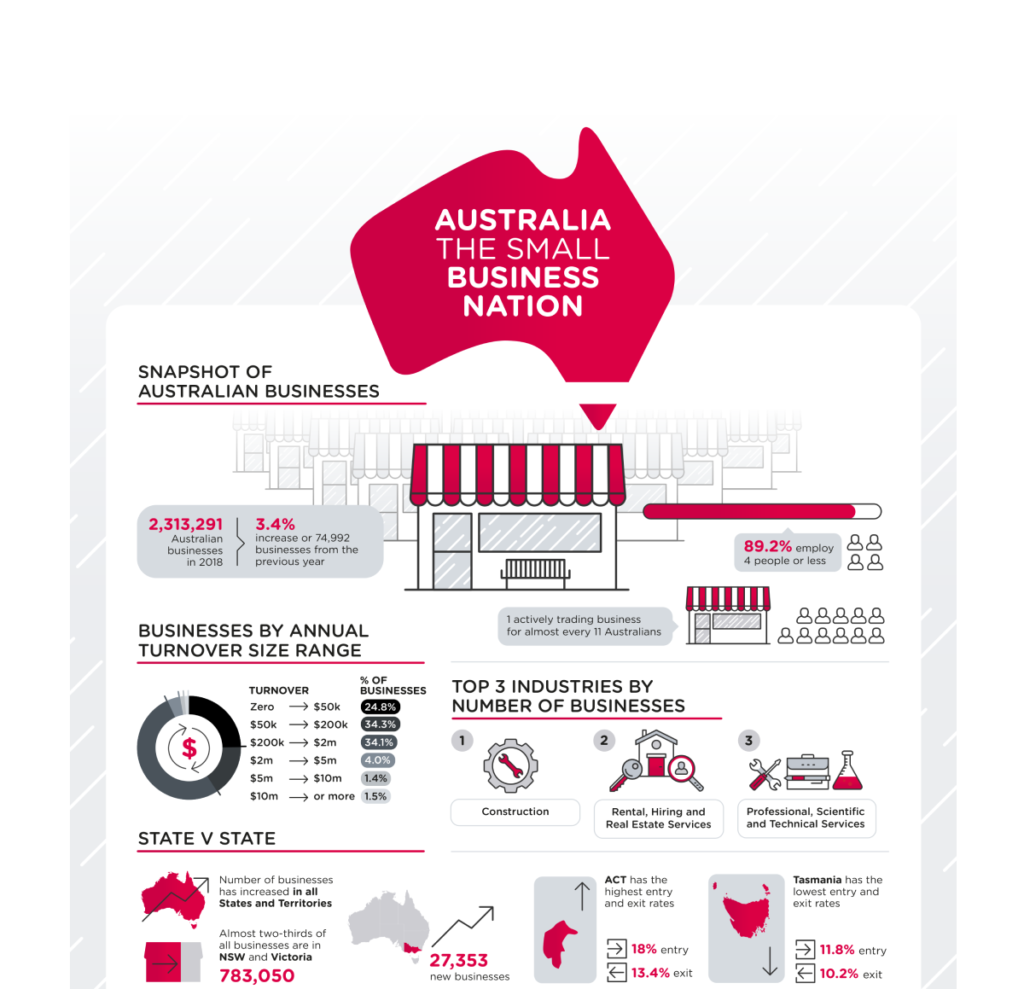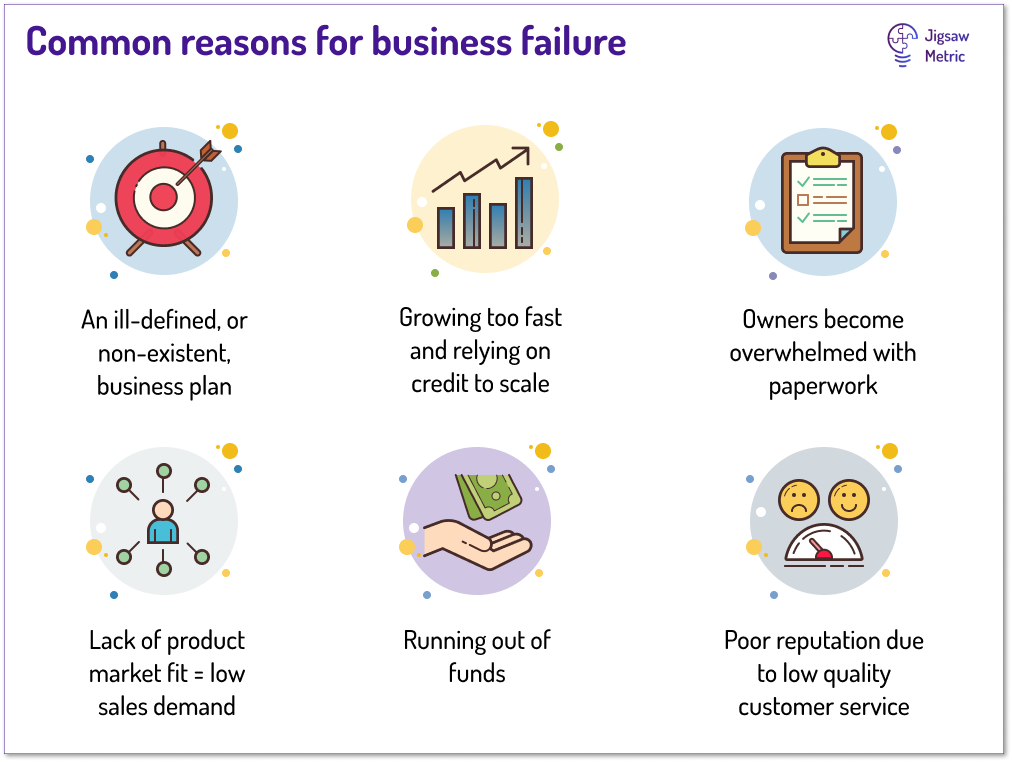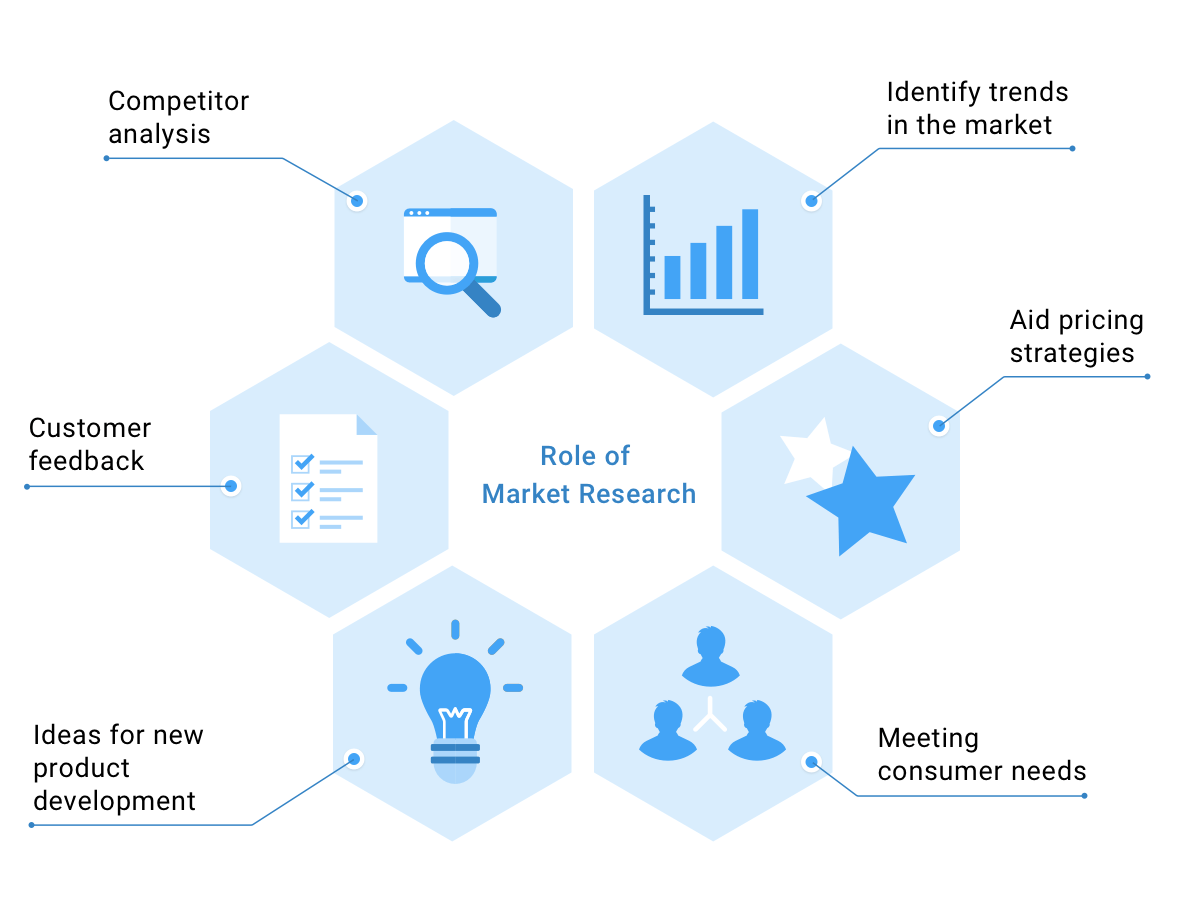The post Managed IT Services: Australia’s Growing Digital Backbone appeared first on TheAussieway.
]]> The managed IT services Australia market is experiencing unprecedented growth, with anestimated annual expansion rate of 9.2%, projected to reach a staggering $44.3 billion by 2025. As businesses increasingly rely on digital transformation to stay competitive, IT strategies are evolving at a rapid pace. This shift is driving a surge in demand for managed service providers (MSPs), who offer comprehensive solutions to streamline operations, enhance cybersecurity, and optimise cloud infrastructure.
The managed IT services Australia market is experiencing unprecedented growth, with anestimated annual expansion rate of 9.2%, projected to reach a staggering $44.3 billion by 2025. As businesses increasingly rely on digital transformation to stay competitive, IT strategies are evolving at a rapid pace. This shift is driving a surge in demand for managed service providers (MSPs), who offer comprehensive solutions to streamline operations, enhance cybersecurity, and optimise cloud infrastructure.
Organizations of all sizes are recognizing the benefits of outsourcing IT services, particularly in an era where technology is a fundamental pillar of business success. From small startups to large enterprises, companies are embracing managed IT services to gain access to specialized expertise, reduce operational costs, and ensure round-the-clock IT support. As businesses grow more reliant on technology-driven solutions, the need for robust and scalable IT frameworks becomes even more essential. This shift is driving a surge in demand for managed service providers (MSPs), who offer comprehensive solutions to streamline operations, enhance cybersecurity, and optimise cloud infrastructure.
A Shift Toward Outsourcing

One of the most significant IT outsourcing trends in recent years is the growing preference for businesses to delegate their IT needs to specialized MSPs. This transition allows organizations to focus on core operations while leveraging the expertise of third-party providers for IT maintenance, cloud management, and cybersecurity. Australia and New Zealand together host approximately 1,300 MSPs, playing a crucial role in supporting businesses across various industries. These providers contribute to the regional economy by fostering innovation, creating jobs, and enhancing overall digital resilience.
Key Drivers of Growth
Increasing Demand for Cloud Solutions
The rise of cloud computing services is a major force behind the expansion of managed IT services. Businesses are increasingly migrating to cloud-based infrastructure to benefit from scalability, cost savings, and operational flexibility. With the surge in remote work and digital collaboration, cloud solutions provide companies with secure and efficient platforms to store and manage data. MSPs are at the forefront of this transformation, offering businesses tailored cloud strategies that enhance performance and security.
Heightened Focus on Cybersecurity
The importance of cybersecurity in managed IT has never been more critical, with cyber threats becoming increasingly sophisticated. Businesses in Australia face growing risks from cyberattacks, data breaches, and ransomware incidents. Managed IT service providers offer proactive security measures, including continuous monitoring, threat detection, and compliance support. By integrating advanced security frameworks, MSPs help organizations mitigate risks and safeguard sensitive information.
Cost Efficiency and Operational Flexibility
Businesses are always looking for cost-effective ways to enhance productivity, and outsourcing IT services provides a practical solution. The Australia IT solutions landscape has evolved to include pay-as-you-go models, allowing organizations to scale their IT operations based on demand. Instead of investing in expensive in-house IT teams, companies can rely on MSPs for specialized services, ensuring maximum efficiency and reduced overhead costs.
Growing Need for IT Support and Maintenance
As businesses expand their digital footprint, the need for reliable IT support Australia has intensified. Downtime and technical issues can severely impact productivity and revenue. MSPs offer 24/7 monitoring, remote troubleshooting, and on-site assistance, ensuring minimal disruption to business operations. This continuous support structure enables companies to operate efficiently while focusing on growth and innovation.
Increasing Adoption of Cloud Services

Cloud computing has revolutionized technology solutions for susinesses, offering flexibility, scalability, and cost-efficiency. Companies can scale their IT resources up or down based on demand, eliminating the need for expensive on-premise hardware. MSPs play a crucial role in cloud migration and management by ensuring seamless transitions, optimizing performance, and providing secure data storage solutions. As more companies shift to the cloud, managed IT providers continue to refine their offerings to meet evolving business needs.
Managed service providers (MSPs) offer end-to-end IT infrastructure management, ensuring businesses can seamlessly adopt and manage cloud technologies. These providers assist with cloud security, backup and disaster recovery, and hybrid cloud implementations, allowing companies to leverage the best of both private and public cloud environments. With increasing competition and customer demand for faster services, cloud adoption is becoming a necessity for Australian businesses seeking innovation and efficiency.
Rising Cybersecurity Concerns
With cyberattacks growing in sophistication, businesses must prioritize security to protect their data and infrastructure. Robust IT Infrastructure Management is critical in mitigating risks associated with data breaches, ransomware, and other cyber threats. MSPs deliver comprehensive cybersecurity solutions, including vulnerability assessments, threat detection, and incident response strategies. By implementing proactive security measures, managed IT providers help organizations safeguard their digital assets and maintain regulatory compliance.
The increasing frequency of cyber threats highlights the need for Australia business IT services that focus on cybersecurity. MSPs assist businesses in implementing multi-layered security frameworks, ensuring compliance with Australia’s stringent data protection laws. Services such as Security Information and Event Management (SIEM), endpoint protection, and zero-trust security models help businesses mitigate cyber risks and maintain a secure IT environment.
Focus on Digital Transformation
Digital transformation is a key driver of managed IT growth, enabling businesses to enhance efficiency, improve customer experiences, and stay competitive. MSPs facilitate this transformation by integrating emerging technologies such as artificial intelligence, automation, and the Internet of Things (IoT). By leveraging these innovations, companies can streamline operations and drive long-term success in an increasingly digital world.
Many businesses are shifting towards IT modernization strategies that incorporate intelligent automation, predictive analytics, and remote working solutions. MSPs support organizations in making this transition by providing remote IT support, ensuring seamless connectivity, troubleshooting, and maintenance. This enables businesses to focus on their core functions while leaving IT management to expert professionals.
Compliance with Regulations
Navigating Australia’s regulatory landscape can be complex, with strict data protection and privacy laws in place. Businesses must adhere to compliance frameworks to avoid penalties and reputational damage. MSPs assist in this process by ensuring organizations remain compliant with evolving regulations, implementing secure data management practices, and conducting regular audits. By providing expert guidance, managed IT providers help businesses operate with confidence in a highly regulated environment.
In industries such as finance, healthcare, and government, data protection and compliance are crucial. MSPs ensure that businesses adhere to legal frameworks such as the Australian Privacy Act, Essential Eight cybersecurity guidelines, and ISO 27001 certification requirements. Through regular security assessments and policy enforcement, managed service providers help companies maintain compliance while minimizing risks associated with non-compliance.
The Role of Top Managed IT Service Providers
The Australian market is home to some of the most innovative managed IT service providers, offering specialized solutions tailored to different business needs. The top 50 MSPs in Australia excel in areas such as remote IT support, cybersecurity, cloud management, and IT infrastructure optimization. Their expertise allows businesses to enhance efficiency, reduce downtime, and improve overall IT performance.
Here are some of the leading MSPs in Australia:
- First Focus – Offers comprehensive IT solutions, including cloud, security, and networking services.
- Centorrino Technologies – Specializes in managed security and IT support services.
- ADITS – Recognized for customer-centric IT solutions and consulting.
- ONGC Systems – Delivers cloud migration and cybersecurity services.
- Command IT Services – Provides scalable managed IT solutions for small and medium businesses.
- Brennan IT – Focuses on enterprise IT management and digital transformation.
- CT4 – Specializes in cloud computing and data management.
- eStorm Australia – Offers IT strategy consulting and cybersecurity solutions.
- Powernet IT Solutions – Provides IT support and infrastructure management services.
- Fujitsu Australia – A leading provider of end-to-end IT solutions and infrastructure.
For the full list of the top 50 managed service providers in Australia, businesses can refer to industry rankings provided by platforms like Cloudtango and MSP Pie.
Engaging with these top MSPs ensures that businesses have access to cutting-edge Australia business IT services, helping them remain competitive, secure, and future-ready in an ever-evolving digital landscape.
Trends in Service Diversification and Customer Experience
1. Service Diversification
The landscape of IT outsourcing trends continues to evolve as MSPs expand their service portfolios. Traditionally focused on IT infrastructure management, many providers are now incorporating IT consulting, cloud services, and project management into their offerings. This diversification allows businesses to access comprehensive Australia IT solutions under a single umbrella, streamlining their digital operations and ensuring seamless integration of new technologies.
2. Customer Experience
Delivering an exceptional customer experience is becoming a priority for MSPs. Companies seek responsive and personalized IT services for SMEs, ensuring that businesses of all sizes receive tailored support. Managed IT providers are investing in user-friendly platforms, real-time assistance, and proactive maintenance to meet modern expectations. By focusing on customer-centric strategies, MSPs enhance client satisfaction, build trust, and strengthen long-term partnerships.
3. Transition to Cloud Service Providers
As cloud adoption accelerates, MSPs are shifting their focus from hardware procurement to cloud service management. Organizations are increasingly leveraging digital business strategy to enhance agility and scalability. Managed IT providers play a vital role in this transition, helping businesses migrate workloads, optimize cloud environments, and ensure data security in multi-cloud infrastructures. This shift enables companies to achieve operational efficiencies while reducing capital expenditures on legacy systems.
Future Prospects for MSPs in Australia
The MSP sector in Australia is poised for significant growth, driven by increasing demand for outsourced IT solutions, cloud services, and cybersecurity expertise. As more businesses adopt digital-first approaches, the need for reliable and innovative IT partners will continue to rise.
For companies navigating IT outsourcing trends, the key to success lies in adaptability. By forming strong partnerships with MSPs, businesses can leverage cutting-edge technology, optimize costs, and enhance operational resilience. Whether through remote IT support, cloud optimization, or cybersecurity strategies, MSPs are set to play an integral role in shaping Australia’s digital economy.
Moreover, the importance of IT services for SMEs cannot be overstated. Smaller enterprises, which often lack dedicated IT departments, rely on MSPs to provide enterprise-level expertise without the associated costs. By offering tailored solutions that address the unique challenges of SMEs, MSPs contribute to a more competitive and technologically advanced business landscape.
Conclusion
The demand for managed IT services is set to continue its upward trajectory, driven by advancements in cloud computing, heightened cybersecurity requirements, and the ongoing digital transformation. As organizations seek reliable IT support Australia, they turn to managed service providers to enhance security, optimize infrastructure, and drive business growth. With a strong network of MSPs offering innovative solutions, Australia’s digital landscape is poised for a future of sustained technological evolution and economic success.
The post Managed IT Services: Australia’s Growing Digital Backbone appeared first on TheAussieway.
]]>The post Why Australian Small Businesses Are Failing In Early Stages appeared first on TheAussieway.
]]>
According to estimates, Australia currently has around 2.3 million small businesses. Sadly, one in three newly established small businesses in Australia fail in the first year, followed by two out of four by the end of the second year, and three out of four by the end of the fifth.
A recent study by the University of Technology, Sydney shows that the factors are frequently cited as the cause of business failure are poor financial management, bad management, bad record-keeping, issues with sales and marketing, issues with staffing, failure to seek outside counsel, general economic conditions, and personal factors.
As we dig deeper, we find, Accounting for 32% of all failures, financial mismanagement is the leading reason for business failure. Financial mismanagement refers to several problems, such as a lack of business experience, cash flow problems, starting with insufficient capital, excessive private draws, excessive credit utilisation, a lack of budgeting, and inadequate tax preparation.
Incompetent management is the reason why 15% of businesses fail. 12% of unsuccessful businesses had insufficient or wrong records and some of them don’t even have any case files or books.
11% of businesses fail due to inefficient sales and marketing issues. As Some of the severe problems in this group include a poor promotion, an inability to handle seasonal conditions, and inadequate competitor awareness.
According to another estimate, 9 % of businesses fail due to staffing issues and surprisingly, only 3 % of companies ignore external counsel when facing a crisis. Looking at the bigger perspective, 14% of failures refer to general economic conditions. While, 6 % of businesses fail due to personal reasons like divorce, illness, and changes in circumstances.
However, small businesses in Australia are crucial to the country’s economy since a robust small business sector is necessary for a prosperous economy and also indicates more employment prospects.
So, if you also have a great idea for a small business and have always wanted to be your own boss, then continue reading this article to learn about the mistakes to avoid in running a successful small business.
Some Interesting Facts About Australia Small Businesses

- A company that employs fewer than 20 people is considered a small business. They make up nearly 98% of all businesses.
- Australia’s small Business sector has been the fastest-growing sector, that aged between 45 and 59, 61% of small business owners.
- Australia’s gross domestic product is composed of 35% of small businesses (GDP).
- 44% of the workforce in Australia is employed by small businesses.
- The main industries employing people are farming, forestry, and fishing.
- The second-highest number of workers are employed by small rental, hiring, and real estate businesses.
- There are more apprentices and trainees than in any other industry, with construction ranking third in terms of employment.
Here are some typical reasons why small businesses in Australia tend to fail

Insufficient Research

One of the most common reasons for new businesses failing is that there is no demand in the market for their goods or services. Knowing who your competitors are, who your target audience is, and what will motivate them to do business with you are some of the most important first steps you need to take when you are setting up a business. Other important first steps include researching everything about the current market and the current and future trends in your industry.
Not Having a Proper Business Plan

A strong business plan may help you decide the direction of your business, an action plan to help you achieve your goals, and get the capital you need to start or grow your business. However, failing to have a plan exposes your organisation to mismanagement, which is one of the most common reasons for small business failure. A business plan can also help you stay organised and on task.
Lacking the Necessary Business Financing

Many small business entrepreneurs fall into the trap of running out of money or not realising the costs associated with starting and maintaining a business. The truth is that not every owner of a small business has the resources to pay the startup fees of a new venture. Therefore, you should incorporate the fixed and variable expenditures associated with starting your business while creating your business plan.
Remember that money is king at all times. It is crucial to bargaining in all areas of your organisation because cash flow problems can cause even profitable companies to fail. Avoid making customers wait too long to pay for your goods and services, and always work to negotiate payment terms with your suppliers that meet the expectations and requirements of your business in terms of cash flow.
Poor Marketing

You have a serious issue on your hands if all of your capital is going towards product development and none is left over for marketing.
A good marketing strategy will strike the right balance between acquiring new customers (new customer acquisition), and cultivating a base of devoted existing customers, depending on the nature of your business and who your target audience is (retention).
Achieving the balance between “conventional” offline marketing operations (including advertising, direct mail, letterbox drops, local area marketing, posters and flyers, and business-to-business marketing) and online marketing (including having a website for your business and using social media for business pages to target your audience) can be challenging sometimes. If marketing isn’t your expertise, engage an experienced marketer or hire a marketing firm. However, whatever you decide, be sure it has a track record of success in your sector.
Failing to Keep Up with New Market Demands or Trends

Building a loyal customer base requires an understanding of your target audience and knowing how to relate with them. To make sure that you stay on top of your client’s needs, you must also have strategies in place. You run the danger of losing those loyal customers to your competitors if you don’t understand what they want from you (via customer feedback surveys, watching and responding to comments on your social media business pages, and just plain talking to your customers).
Speaking of rivals, if they are outperforming you and you run the risk of losing out on sales, you should also keep an eye on what they are doing to keep up with the new trends. So, don’t forget to check out these Australian small business trends in 2022.
Limited Experience

Without a doubt, this is among the most common reasons for a small business to fail in its first year of operation. Lack of planning and poor business analysis reduces the chances of success for inexperienced business owners. If your business doesn’t have enough funding, the problem will get worse.. Everything will collapse if one of these elements breaks down.
Poor Location

This is just another death sentence for small businesses that depend majorly on foot traffic. As a result, small firms that are not located in metropolitan cores or other regions with heavy traffic or densities of people are more likely to declare bankruptcy than those that are more well-known to the general public.
Poor Financial Management

33% of business failures in 2020 were attributed to inadequate financial control, according to reports from external administrators. Financial troubles arise quickly from improper small business finance management and bad credit arrangements, particularly when sales are lower than expected.
Inability to Adapt

Like in life, things don’t always go according to plan in small businesses. It’s inevitable that your business will encounter obstacles along the way, whether it’s responding to shifting trends within your industry, unforeseen occurrences (like the COVID-19 pandemic or natural disasters), the impact of broader economic issues (such as changes to interest rates, government assistance and support), or even changes to your personal situation (due to illness or other challenges). To survive, you might need to change course from a bad hire, an unwise business decision, or an incorrect product or service. The most crucial thing in this situation is to keep aware of what is occurring both inside and outside of your company and to be prepared to react – quickly!
Failing to Recruit and Keep the Correct Personnel

Hiring, managing, and keeping employees is one of the main difficulties small business owners confront. In the long term, it will be beneficial for you to build a varied workforce with complementary skill sets, the proper attitude, and values that are in line with your company. It’s crucial to not only find the proper candidates but also foster an environment at work that encourages long-term employment.
How Many Small Businesses in Australia Are Successful?
You may have heard different reports about how many businesses fail in Australia. Some websites claim that 97% of small businesses in Australia fail. Others claim that the success rates far outweigh the failure rates. Given this, how can you know the truth if you’re thinking about starting your own business?
You now have a better understanding of the facts thanks to the information we gathered from government sources about the success rates of Australian small businesses.
According to the Australian Small Business and Family business Ombudsman’s July 2019 report, a business’ survival percentage increases with size. The success percentage of 0–19 employee small businesses is 59.7%. Businesses with between 20 and 199 employees succeed at a rate of 75.8%.
This is consistent with a previous Australian Bureau of Statistics analysis that found that from 2010 to 2014, the survival percentage for small businesses with no employees was 56%. The percentage rose to 68% for companies with 1-4 employees.
Small businesses in Australia are still less successful than larger corporations on a percentage basis. These figures, however, are not so horrifying that they should utterly discourage businesspeople who want to pursue their aspirations. Having your own small business may, after all, be incredibly satisfying and indeed this is the time to prepare for small business.
The post Why Australian Small Businesses Are Failing In Early Stages appeared first on TheAussieway.
]]>